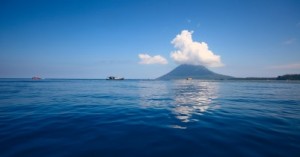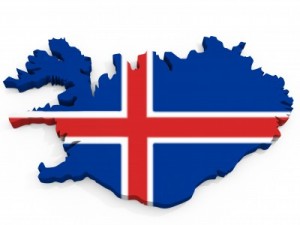Have you ever been to Hawaii? The island of Hawaii is one of the most beautiful places on Earth, but it is also one of the most dangerous because the entire island is actually the top of an underwater volcano, including Kilauea and Mauna Loa on the island of Hawaii — two of the world’s most active volcanoes. That’s no big deal as long as the volcano isn’t active, but what happens when it “wakes up?” What happens when all the underwater volcanoes start waking up? Like what’s happening today…..
Volcano Alert
The volcanoes on the ocean floor are much more active than volcanoes on the ground. In fact, the magma that pours from them is constantly creating new sea floor, and new crust creates surface pressure that causes global earthquakes. There are about 1,500 volcanoes on land that are known to have been active over the past 10,000 years, and 75 percent of them are located along the Pacific Ring of Fire. There are an even larger number of submarine volcanoes, but exactly how many is unknown. There are hundreds of thousands of volcanoes that have been active during the Earth’s lifespan that we do not know about. On average, 50-70 volcanoes erupt every year, but there have never been as many volcano alerts as we are seeing today.
Living Next To A Volcano
Volcanoes are not randomly distributed over the Earth’s surface. Most form on the edges of continents, along island chains, or beneath the the sea forming long mountain ranges. Between 1980 and 1990, volcanic activity killed at least 26,000 people and forced nearly 450,000 to flee from their homes. Over the past 100 years, our population has grossly increased, and we have built mega-cities too close to these very same “natural disaster zones” – skyscrapers, nuclear power plants, and a network of concrete and steel bridges encircle the Earth’s deadliest volcanoes.
Active Island Volcanoes
The most active volcano on Earth is Kilauea on Hawaii. The second most active volcano in the world is Mount Etna on Sicily’s east coast. There are more than 300 volcanic vents across Mount Etna, ranging in size from small holes to massive craters hundreds of miles across.The third most active volcano is Piton de la Fournaise in the Indian Ocean. It erupted in 2006, 2007, and in 2008. On April 20, 2010, the Eyjafjallajokull volcano suddenly erupted 75 miles southeast of Reykjavik, Iceland. Lava burst from the crater melting the Eyjafjallajokull glacier sitting atop the volcano, and its chunks were as big as a jeep.
Now, after over 100 years of inactivity, the Earth’s underwater volcanoes are waking up. If the major cities and urban structures that we have positioned too close to these volcanoes are destroyed, let’s rebuild them somewhere else, you think?


